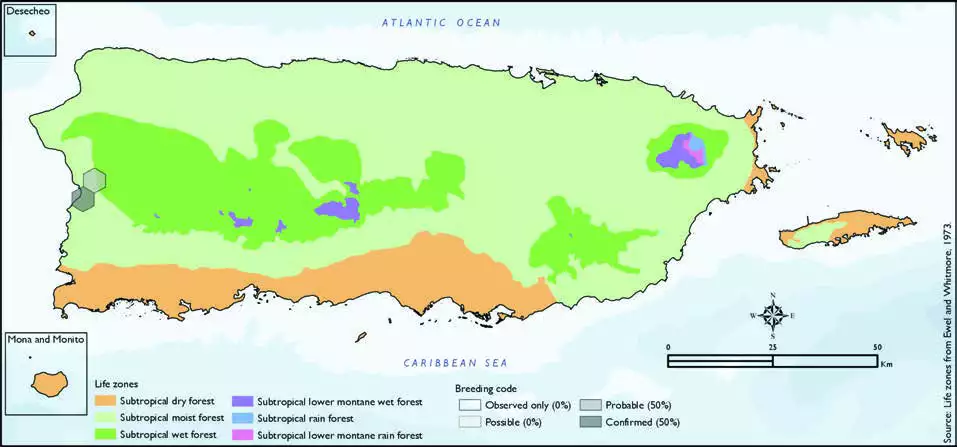White-fronted Parrot
Description
The white-fronted amazon (Amazona albifrons) also known as the white-fronted parrot, or by the adopted slang term spectacled amazon parrot, is a Central American species of parrot. Not to be confused with the red-spectacled amazon. They can imitate a range from 30 to 40 different sounds. Like other large parrots, the white-fronted parrot has a long potential life span, usually around 40 years.
Distribution & Habitat
The White-fronted Parrot is native to Central America and
has been introduced to Puerto
Rico, where it is restricted to
the municipality of Mayagüez,
although it has been observed
less frequently there in recent
years (Falcón and Tremblay
2018). In its native habitat,
it can be usually found in
agricultural areas with patches
of forest, deciduous forests, and
mangroves (Gómez de Silva and
others 2005). In Puerto Rico, it
is found in parks and secondary
forests where it feeds on
nonnative fruits and seeds. The
atlas fieldwork yielded a total of two records within two hexagons
or 0.4 percent of the 479 total
hexagons (see map). Of the two
hexagons where this species was
found, breeding met the atlas
definition of confirmed in 50
percent (one) of the hexagons
and probable in 50 percent (one)
as well (see map). White-fronted Parrot distribution. The map shows the highest breeding code by hexagon and overlaying the ecological life zones in
Puerto Rico. Note: percentages may not total 100 due to rounding.

Breeding Habits
In the White-fronted Parrots native habitat, breeding occurs
from January to May, according
to previously published reports
(del Hoyo and others 2013). Atlas
results show that this species
breeds during March and April
(see table and chart, respectively) 197White-fronted Parrot/Cotorra Cabeciblanca in the subtropical moist forest life zone (100 percent of the
hexagons) (see table and map).
Conservation
The current population trend of the White-fronted Parrot in
its native range is suspected to
be increasing as this species
takes advantage of perturbed
sites that create new suitable
habitat (BirdLife International
2018). The White-fronted Parrot
is currently listed as a species
of least concern by the IUCN (BirdLife International 2018).
However, on Puerto Rico where
the introduced population
is restricted to Mayagüez,
sightings have declined from
11 individuals in 2011 to one
to two individuals in recent
years (Falcón and Trembly
2018). Locally, this species is not
listed in any of the threatened
categories of PRDNER and
USFWS. In Puerto Rico, none of
the hexagons where this species
is known to breed overlay a
protected area.
Related Species
Family:
parrot